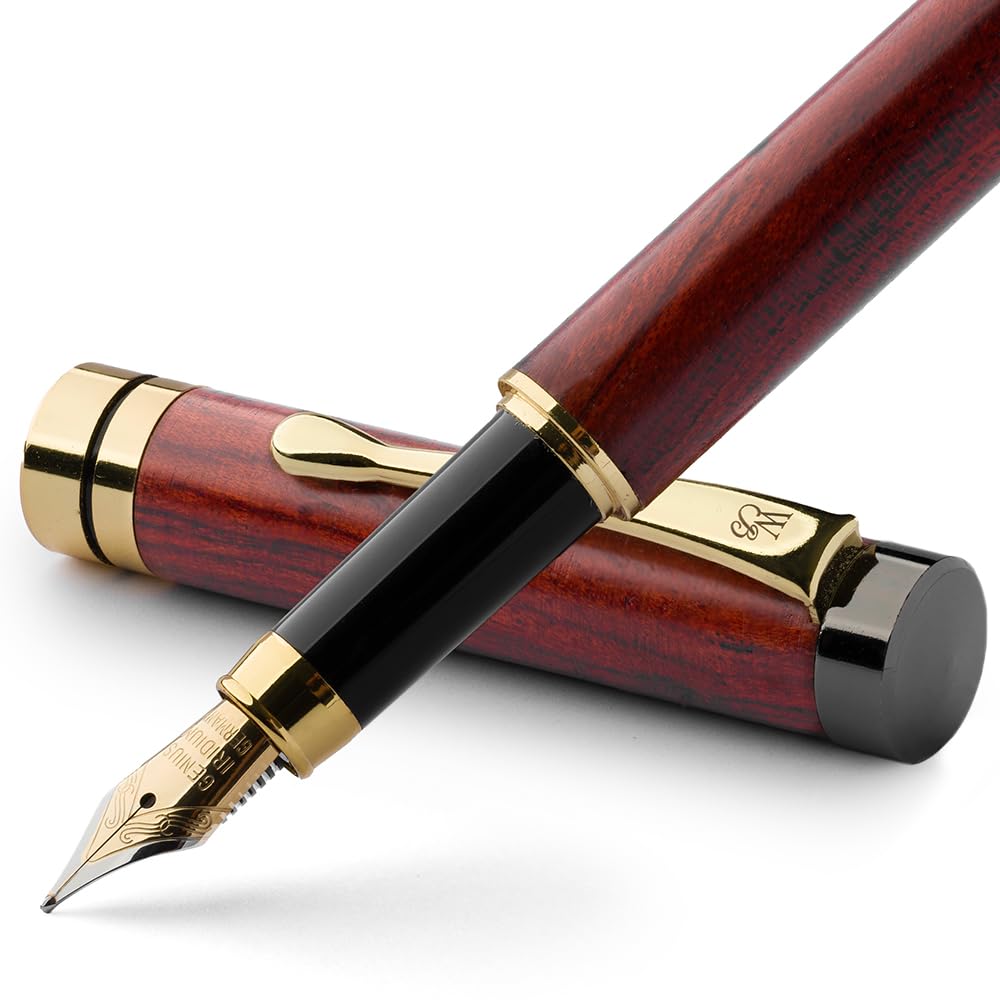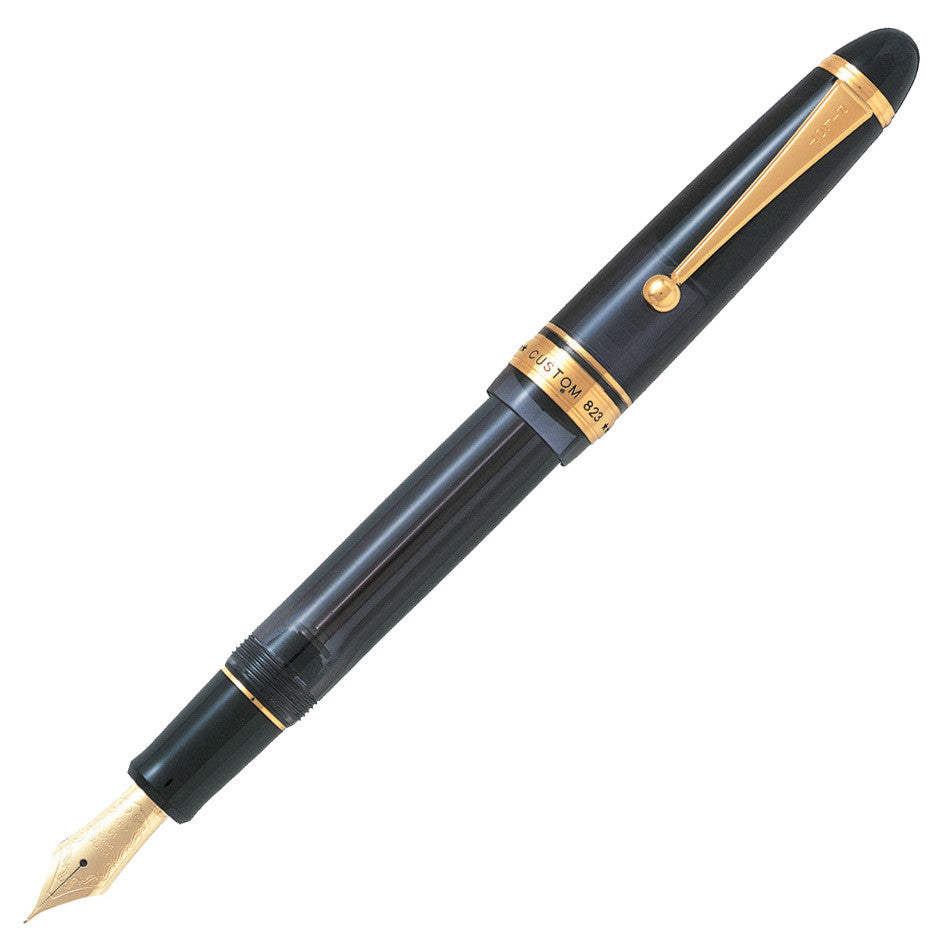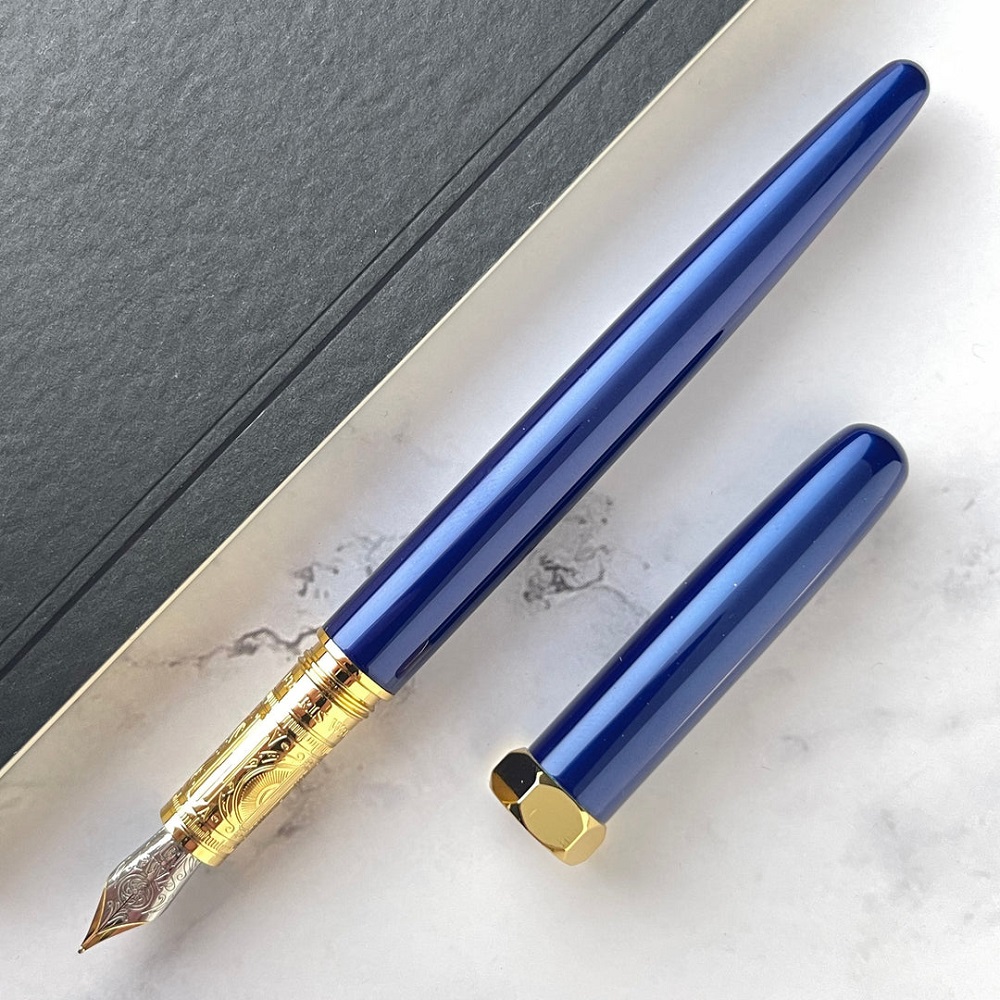Fountain pens have long been celebrated for their elegance, craftsmanship, and unique writing experience. Unlike ballpoint pens or gel pens, fountain pens use liquid ink that flows smoothly from the nib, offering a writing style that many enthusiasts prefer. With a range of styles, materials, and nib sizes available, selecting the perfect fountain pen to suit your writing style can be daunting. This article will guide you through the essential factors to consider when choosing a fountain pen, ensuring that you find the right one for your needs.
Understanding Fountain Pen Basics
What is a Fountain Pen?
A fountain pen consists of a nib, feed, and ink reservoir. The nib is the part of the pen that touches the paper, while the feed ensures a steady ink supply. Fountain pens use either cartridges, converters, or built-in reservoirs to hold ink. When you write, ink flows from the reservoir through the nib to the paper. This flow creates a distinct writing experience that many find more satisfying than other pen types.
Fountain pens vary significantly from one another in terms of design, materials, and functionality. Some are crafted from luxurious materials like precious metals and resin, while others utilize more traditional plastics. Understanding these components helps you appreciate the pen’s craftsmanship, making it easier to choose one that resonates with your personal style.
How Fountain Pens Work
The mechanism of a fountain pen relies on gravity and capillary action to deliver ink. When you tilt the pen while writing, ink flows from the reservoir through the feed to the nib. Some fountain pens use a piston mechanism, which draws ink into the barrel when you twist a knob. Others utilize ink cartridges for easy refilling, while some come with converters that allow you to use bottled ink. Recognizing the different filling systems simplifies your choice and can enhance your overall writing experience.

Identifying Your Writing Style
Analyzing Your Writing Habits
Before you delve into selecting a fountain pen, assess your writing habits and styles. Do you write frequently or occasionally? Are you primarily focused on long-form writing, such as journaling or note-taking, or do you need a pen for quick notes and signatures? Understanding how you intend to use the pen will help narrow down your options.
Consider your preferred writing environments as well. If you often write in a controlled setting, such as at a desk, a heavier, more decorative pen may suit your aesthetic preferences. On the other hand, if you need a pen for on-the-go situations, a lighter, more portable option may be the better choice.
Exploring Different Writing Styles
Your writing style greatly influences the type of fountain pen you may prefer. Some individuals have a slow, deliberate handwriting style, while others may write quickly and fluidly. If you appreciate a heavier ink flow, you may enjoy a broader nib. Conversely, if your handwriting is fine and precise, a finer nib may be more suitable.
Experimenting with different nib sizes and styles can help you determine what feels best when writing. Trying out various pens at a local stationery store or pen show will provide valuable insights into how each fits your unique writing style.

Choosing the Right Nib Size
Understanding Nib Sizes
Nib sizes play a crucial role in the overall writing experience. Common nib sizes include extra fine (EF), fine (F), medium (M), broad (B), and sometimes specialty sizes such as stub or italic. Each size offers a distinct writing experience and stroke width.
- Extra Fine (EF): Ideal for detailed work, like note-taking or annotations, this nib provides a very narrow line with less ink flow. It’s excellent for writing on small pages or in margins.
- Fine (F): Slightly wider than extra fine, this nib still maintains a precise line that works well for everyday writing, making it a popular choice among users.
- Medium (M): This size strikes a balance between line width and smooth flow, suitable for general writing requirements and offering more flexibility.
- Broad (B): A broad nib delivers a thicker line, making it great for signatures, artistic writing, or anyone who enjoys a more prominent stroke.
Finding Your Perfect Match
Choosing the right nib size depends on your writing preferences and the type of paper you typically use. If you enjoy writing on thinner paper, a finer nib may prevent ink bleed-through. On thicker paper, broader nibs can shine, allowing the ink to express more of its character.
Additionally, consider experimenting with different nib grades before settling on one. Assessing multiple nib sizes on various types of paper during a trial period will help you discover the one that feels most comfortable for you.

Considering Materials and Design
Exploring Material Choices
Fountain pens are available in a variety of materials, from plastic and resin to more luxurious choices like metal, wood, or acrylic. Each material affects the pen’s weight, balance, and overall aesthetic.
- Plastic and Resin: Often more affordable and lightweight, these materials easily come in various colors and designs, making them excellent for beginners.
- Metal and Steel: These usually offer a more substantial feel and are known for their durability. Many enthusiasts appreciate the quality of metal pens, as they often convey a sense of refinement.
- Wood and Acrylic: Unique and artistic choices, wood and handmade acrylic pens can provide a distinct flair. The individual craftsmanship often enhances the pen’s charm.
Choosing a Design That Resonates
Design preferences vary by individual, and selecting a pen that feels visually appealing can enhance your writing experience. Consider whether you prefer classic, vintage styles or modern, minimalist designs. Additionally, think about the grip and comfort level. A well-balanced pen contributes significantly to a pleasurable writing experience, allowing you to write for extended periods without fatigue.
Spend some time exploring different designs online or in stores to understand the aesthetics that attract you. Finding a fountain pen that reflects your personality ensures a satisfying connection with the object.

Deciding on Filling Mechanisms
Types of Filling Systems
Different fountain pens utilize various filling mechanisms, and understanding these options can significantly affect your experience. The two most common systems are cartridge/converter systems and piston-fillers:
- Cartridge/Converter System: The cartridge system allows users to pop in pre-filled ink cartridges, making it easy to change inks. Converters can also be attached to the pen, allowing the use of bottled ink. This flexibility is convenient for users who enjoy experimenting with different ink colors.
- Piston Fillers: These pens have a built-in mechanism requiring the user to twist or pull a lever to draw ink into the reservoir. Piston-fillers typically hold more ink than cartridges, making them great for long writing sessions.
Evaluating Your Needs
The choice between a cartridge/converter system and piston fillers comes down to personal preference and writing habits. If you write occasionally or need flexibility with ink colors, a cartridge/converter pen may be the better fit. However, if you’re in it for the long haul, a piston filler can provide a satisfying experience and reduced downtime for filling.
Make sure to consider how often you anticipate changing ink colors and how comfortable you feel managing ink supplies. Your choice should align with your writing routine and lifestyle.
Test Before You Buy
Trying Out Fountain Pens
When choosing a fountain pen, testing it before determining which one fits your criteria can be invaluable. Many stationery and pen stores have samples available for you to try, allowing you to experience the weight, size, design, and nib feel firsthand. Writing with a pen gives you immediate feedback on its performance and suitability for your writing style.
Engaging with various pens lets you find the one that feels comfortable in your hand and produces a writing experience you love. Don’t hesitate to spend time testing multiple options in-store to ensure you make an informed choice.
Attending Workshops and Events
Consider attending fountain pen shows or local workshops. These events often provide opportunities to see various brands and models, connect with enthusiasts, and ask questions. Engaging with experienced users allows you to learn more about their preferences and gain insights into fountain pen care and maintenance.
Participating in these communities can enhance your knowledge and appreciation for fountain pens, aiding your decision-making process. Connections made at these events might lead to uncovering new models or brands that align perfectly with your desired experience.

Caring for Your Fountain Pen
Maintenance Best Practices
Once you’ve selected your perfect fountain pen, proper care and maintenance are essential to ensure longevity and optimal performance. Regularly cleaning the nib and feed prevents ink residue build-up and clogs, preserving the smooth writing experience. Aim to clean your pen every few weeks, or more frequently if you’re switching ink colors often.
Additionally, store your fountain pen horizontally or upright, as this helps prevent ink from leaking or drying out. If you use bottled ink, consider stashing a cleaning solution in your kit to simplify the maintenance process and keep everything in check.
Learning Repair Essentials
Fountain pens are durable tools, but minor issues can arise over time, such as inconsistent ink flow or minor nib damage. Familiarize yourself with common fountain pen repairs and maintenance tips. Some problems can be easily resolved, such as adjusting the nib or ensuring the feed is clean.
Knowing basic maintenance and repairs can save you money and extend the life of your fountain pen. Many online communities offer tips and tutorials, so connecting with these resources can provide essential knowledge that empowers you as a fountain pen owner.
Conclusion
Choosing the right fountain pen involves careful consideration of your writing style, preferences, and needs. Whether you’re a novice eager to explore or an experienced collector searching for the perfect addition, understanding the various aspects of fountain pens will elevate your writing experience.
By focusing on nib sizes, materials, filling mechanisms, and proper care, you can find a fountain pen that complements your unique approach to writing. Enjoy the process of selection, testing, and ultimately writing with a pen that resonates with your style. Fountain pens provide an aesthetic and tactile pleasure, transforming the act of writing into a cherished experience.
